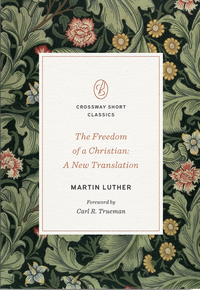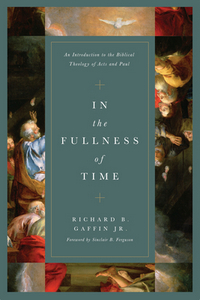by Edward Fisher, Thomas Boston
DETAILS:
Publisher: Christian Heritage
Publication Date: November 1, 2009
Format: Hardcover
Length: 343 pg.
Read Date: November 10-December 1, 2024


The gospel method of sanctification, as well as of justification, lies so far out of the ken of natural reason, that if all the rationalists in the world, philosophers and divines, had consulted together to lay down a plan for repairing the lost image of God in man, they had never hit upon that which the divine wisdom has pitched upon, viz: that sinners should be sanctified in Christ Jesus, (1 Cor 1:2), by faith in him, (Acts 26:18); nay, being laid before them, they would have rejected it with disdain, as foolishness, (1 Cor 1:23).
What I’m Not Going to Talk About…
The controversy or (most) of the history surrounding this book and its contents. This isn’t that kind of blog, and it’d take more research and footnotes than I really want to take time for.
Okay, that’s only kind of true. I’d love to spend time doing that, but I don’t have time for it. And, again, that’s not what I do here. Maybe in 15 or so years, I’ll change my focus when I have more time and I’ll start doing that sort of thing.
What’s The Marrow of Modern Divinity About?
The back of the book says:
An intriguing book, quite unlike any other The Marrow of Modern Divinity defies pigeon-holing. It was written in the 1600s by an author of whom we know little, yet it proved to be a critically important and controversial theological text.
Penned as dialogue between a minister (Evangelista), a young Christian (Neophytus), a legalist (Nomista) who believes Christianity is a set of rules to be obeyed and Antinomista who thinks it’s okay to sin because God will forgive him anyway, it makes for a wonderfully insightful book that remains tremendously relevant for our world today.
This newly laid out and eagerly awaited edition includes explanatory notes by the famous puritan Thomas Boston, an introduction by Philip Ryken and an historical introduction by William Vandoodewaard.
(there are some problems with this, actually, but it’ll do to get started)
In 1645, this book was originally published by “E.F.” That’s probably Edward Fisher—a layman theologian of a few works. But this didn’t make much of an impact at the time. In 1700, Thomas Boston read it and it made a considerable impact on him, so much so that he and a colleague made arrangements to republish it—with the explanatory notes (some of which disagree with Fisher). Some of these notes are very brief, some are anything but.
Part One
Say, then, I beseech you, with a firm faith, The righteousness of Jesus Christ belongs to all that believe, but I believe, and therefore it belongs to me. Yea, say with Paul, ‘I live by the faith of the Son of God who loved me, and gave himself for me’ (Gal. 2:20). “He saw in me (says Luther on the text) nothing but wickedness, going astray, and fleeing from him. Yet this good Lord had mercy on me, and of his mere mercy he loved me, yea, so loved me, that he gave himself for me. Who is this me? Even I, wretched and damnable sinner, was so dearly beloved of the Son of God that he gave himself for me.’
Oh! print this word ‘me’ in your heart, and apply it to your o,” self, not doubting but that you are one of those to whom this ‘me’ belongs.
As the above section said, this is a dialogue. Neophytus and his friend Nomista have been having some discussions with Antinomista and they haven’t gone anywhere, so they agree to go talk to their minister, Evangelista, to help them sort it out. Basically, they’ve been wrangling about the place and use of the Law in the life of the Christian. Evangelista refuses to take either side, showing how both misunderstand things and helps Neophytus to come out of the influence of Nomista and to embrace the Scriptural understanding.
There are four chapters in this Part—”Of the Law of Works, or Covenant of Works,” “Of the Law of Faith, or Covenant of Grace,” and “Of the Law of Christ” take up the bulk of it. He covers the typical Covenant theology here, and applies it to the use of the Law throughout Redemptive History—and then brings it all home in the last chapter, “Of the Heart’s Happiness, or Soul’s Rest.”
Throughout, Evangelista, expounds things in a way fully consistent with the Westminster Standards (and will appeal to them) and will invoke figures like Luther (most frequently), William Perkins, John Calvin, and others, but primarily he’ll invoke Paul. He takes on several errors associated with antinomianism, neonomianism, and the rest—but he’s more interested in positive teaching than correcting error.
If you ask me, it’s easy to see why Boston would find this part of the book attractive and want to get it into the hands of as many people as possible. I do.
Part Two
This part is not mentioned on the back of the book—it’s a much shorter portion of the work, which is part of it. This time Neophytus brings another friend, Nomologista (“a Prattler of the Law”), to Evangelista to help settle a disagreement they’re having. Nomologista tells him that “he is persuaded that he goes very near the perfect fulfilling of the law of God; but I cannot be persuaded to it.” Nomologista affirms that’s true and gives a very surface-level explanation of the Ten Commandments (in a sentence or two). He says he’s pretty much followed those all his life.
Evangelista gives an explanation of the Ten Commandments, along with some other comments on the Law of God, obedience, and whatnot. At some point, NOmologista leaves the conversation and Neophytus and Evangelista wrap things up—with Evangelista giving some reassurance and further guidance to Neophystus.
On the whole, there’s nothing revolutionary or unexpected about the exposition of the Commandments. I did think a couple of the applications Evangelista used were striking, but it’s basically what you read in Watson, Calvin, Turreting or any of the Reformed Catechisms. The things that surprised me the most were the brevity of the comments on the 4th and 7th commandments were.
I did wonder about a couple of the comments Evangelista made in the last page or two. It’s probably a problem with my comprehension, but my notes were basically, “Someone should tell Evangelista to read Part One of this book.” I’m pretty sure I misunderstood something, actually.
On the other hand, a few pages earlier, when Evangelista goes through the commandments in a similar way that Nomologista did, except pointing out how Evangelista frequently breaks them all…it was so reassuring, so comforting to see that even this fictional paragon of theological precision and righteousness fails.
There’s almost nothing (maybe nothing at all) by Boston here, it’s just Fisher.
How to Read This Edition
I’m a little curious about how other editions of this work lay it out—but Christian Heritage lays out the book in a pretty handy way. About 2/3 of each page are Fisher’s text, with some of Boston’s briefer notes in brackets in the text. Some of his one or two-sentence notes are in the 1/3 that’s primarily white space, or subject headings added by the editor.
And then every few pages, you get Boston’s longer notes in double columns—they’re all clearly labeled so you know what he’s talking about.
I think that’s clear enough, but if it’s not, don’t worry about it—there’s a very handy two-page spread showing you all this at the front of the book.
Boston, in his prologue, suggests reading Fisher’s text before the notes, so you can fully get the point of the notes. This makes sense, but you can see why he took the time to say it, because you occasionally will get on a roll with his notes and forget that he’s trying to amplify, clarify, or respond to something else.
So, what did I think about The Marrow of Modern Divinity?
I beseech you to be persuaded that here you are to work nothing, here you are to do nothing, here you are to render nothing unto God, but only to receive the treasure, which is Jesus Christ, and apprehend him in your heart by faith, although you be never so great a sinner; and so shall you obtain forgiveness of sins, righteousness, and eternal happiness; not as an agent but as a patient, not by doing, but by receiving. Nothing here comes betwixt but faith only, apprehending Christ in the promise. This, then, is perfect righteousness, to hear nothing, to know nothing, to do nothing of the law of works; but only to know and believe that Jesus Christ is now gone to the Father, and sitreth at his right hand, not as a judge, but is made unto you of God, wisdom, righteousness, sanctification, and redemption? Wherefore, as Paul and Silas said to the jailer, so say [ unto you, ‘Believe on the Lord Jesus Christ, and thou shalt be saved’; that is, be verily persuaded in your heart that Jesus Christ is yours, and that you shall have life and salvation by him; that whatsoever Christ did for the redemption of mankind, he did it for you.
I’ve frequently said (mostly to myself) that I didn’t know why I haven’t read this book at some point in the last 28 years or so—especially not in the 15 years since this edition came out. However many times I’ve said that prior to starting this book, I probably matched saying it while reading it. This is going to become one of those works I return to.
It’s so clear. It’s so helpful. It’s so full of Gospel truth and assurance. It’s so spot-on in describing the ditches of legalism and antinomianism that are so easy to fall into. And yet, it never gets nasty or harsh in the criticism of the errors, it just points at them and says, “Don’t go there, and here’s why.” So few books along these lines manage that (I’m not saying they’re wrong to show teeth, but Fisher/Boston show you don’t need to).
I cannot recommend this enough.

This post contains an affiliate link. If you purchase from it, I will get a small commission at no additional cost to you. As always, the opinions expressed are my own.

 The Fundamentals of Sacred Theology
The Fundamentals of Sacred Theology

![]()



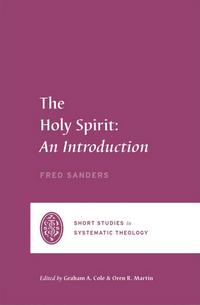



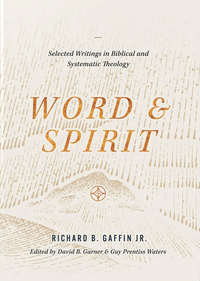
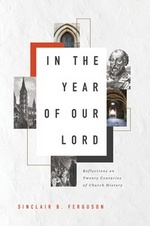
 The seeds of this book were first published in a book Ferguson co-authored called, Church History 101: The Highlights of Twenty Centuries — he’s now taken those chapters, done more research (being retired has freed up some time for him to do some reading), and expanded that into this great survey of Church History.
The seeds of this book were first published in a book Ferguson co-authored called, Church History 101: The Highlights of Twenty Centuries — he’s now taken those chapters, done more research (being retired has freed up some time for him to do some reading), and expanded that into this great survey of Church History.



